So as not to let down our most ardent fans–here is the next chapter in the refit of this 112 year old tug….
OK–we’ve painted the upper and lower house, plus hauled out on the marine rail and cleaned & painted the hull. So I’m now turning to the interior machinery–so put on your overalls and enter the the engine room by clicking the above link…..
OK–you’ve seen the engine running but it wasn’t that simple. After four years of sitting at the dock, all this beast did was to hiss and spit rust and water from everywhere–and at 250 lbs starting pressure this is a lot of hissing. The engineering is a snake-pit of pipes, tubes, valves, etc. Below is the control part of the engine which can either be started from the bridge, back (‘Texas’) deck or right here with the manual over-ride.
Part of the problem was this air valve which pumps air in the 7th cylinder–at the very top of the photo above and stores it in two huge air receivers for future starts. This is critical–as this engine lacks a transmission and clutch–it is a direct reverse–meaning that in order to back down the boat, I have to shut down the engine, shift the cam and restart–all within a second–and then power in the opposite direction. This means bringing the entire crankshaft, rods, pistons, main shaft and propeller (many tons) to a complete stop, then moving the cam 2″ and restarting everything in the opposite direction. This takes a lot of air. So all valves must function. This how I found one when I took it apart:
This is the valve responsible to supply air into the receivers and reaches several hundred degrees in temperature and is under a constant 250 lbs. pressure.
This is the “seventh” cylinder all rebuilt including the valve pictured above. It is powered by the main engine to pump air–which is needed for restarting the engine. On top are two triangular valve housings–letting air in (green piping on right) and out (yellow piping on left–to be stored for the next start). The blue pipe is water coolant.
Here are two open bays showing the camshaft–each supplying the needs of a piston–which is 10″ in diameter and weighs 250 lbs. each. The head is about 400 lbs, and a piston rod is about 200 lbs. This is a lot of mass to turn and reverse direction.
Each bay exhibits four cams and each cam has two lobe strategies for running in both directions. No clutch, no transmission…..very simple. Moving the cam engages the second set of lobes and the timing is now directed to a reverse start and the engine runs the opposite direction. The cams (in order from left to right here) are 1. fuel, 2. intake valve, 3. air start, and 4. exhaust valve.
This engine was built in 1944 by Washington Iron Works and is a model 6-R-13 (6 cylinders, 13″ stroke and right hand). In dual engine applications, these engines were cast as mirror opposites so an engineer could tend to both from a center isle-way. In the Katahdin, it is a single engine but this was built as the port engine for the USS Glassford, a ship that was never built as WWII was winding down at that time.
Washington Iron Works built thousands of engines for 101 years in Seattle (where the two sports stadiums now exist). Only eight Washingtons are still powering vessels. Here’s the engine when it was built in 1944–still in the factory. It has powered three other boats including the Foss 15 which spent a lot of time here in Alaska.
BTW, everyone asks me where I get parts–I’ve a 40′ steel container with two other engines all broken down. The Katahdin engine will run forever.
OK–here are all the moving parts exposed which require oiling every two hours times six cylinders. All the pushrods are exposed on the outside of this engine, unlike the modern automobile engine. The four functions that run this engine (see above) are: Bendex (fuel) injectors, intake valve, air start valve, and exhaust–see cam description above. Everything moves when this puppy lights off. OK–here we go:
and….
After three days of fiddling around with all these controls, I finally found the shifting problem–I’d inadvertently positioned a brass disc in the selector valve backwards–no air, no shift. This has been corrected so it’s time for dock trials, then sea trials….Stay tuned……

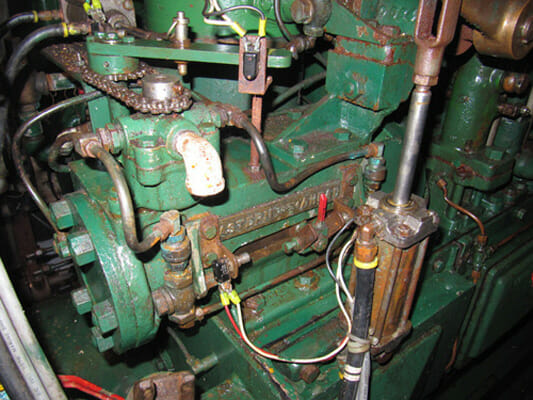
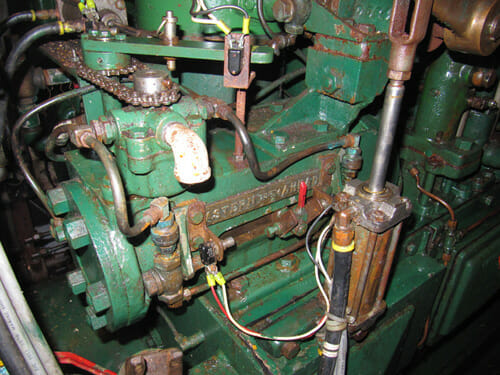

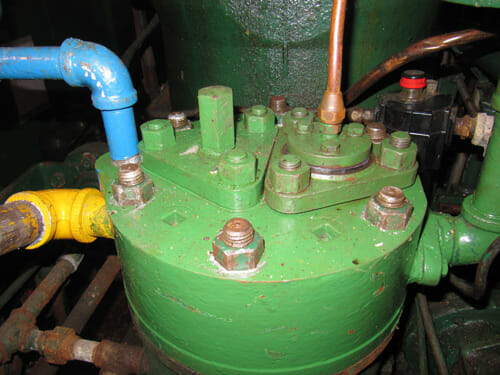
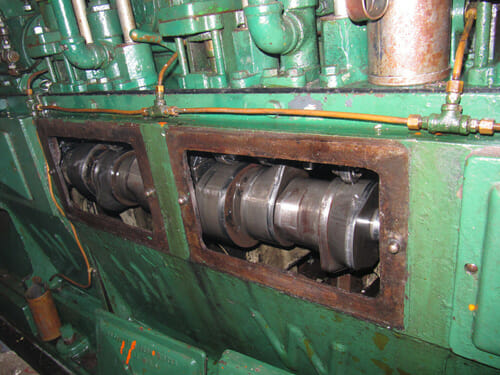
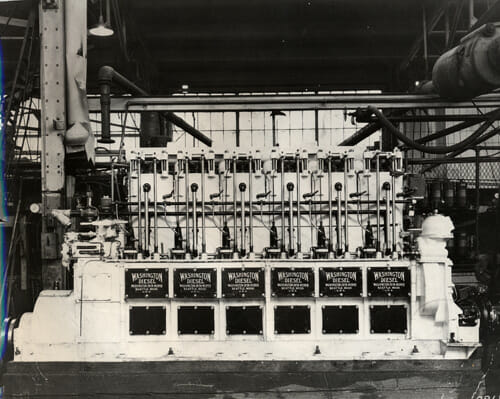
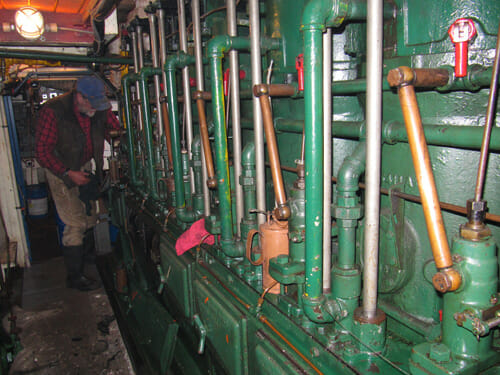
So your lawsuit was settled! Tell us about it!